Take a trip around the world with this Japanese staple, inspired by the pristine beauty and rich flavors of the Alaskan wilderness. These Alaska rolls offer a blend of creamy avocado, crisp cucumber, and the choice of succulent crab or salmon.
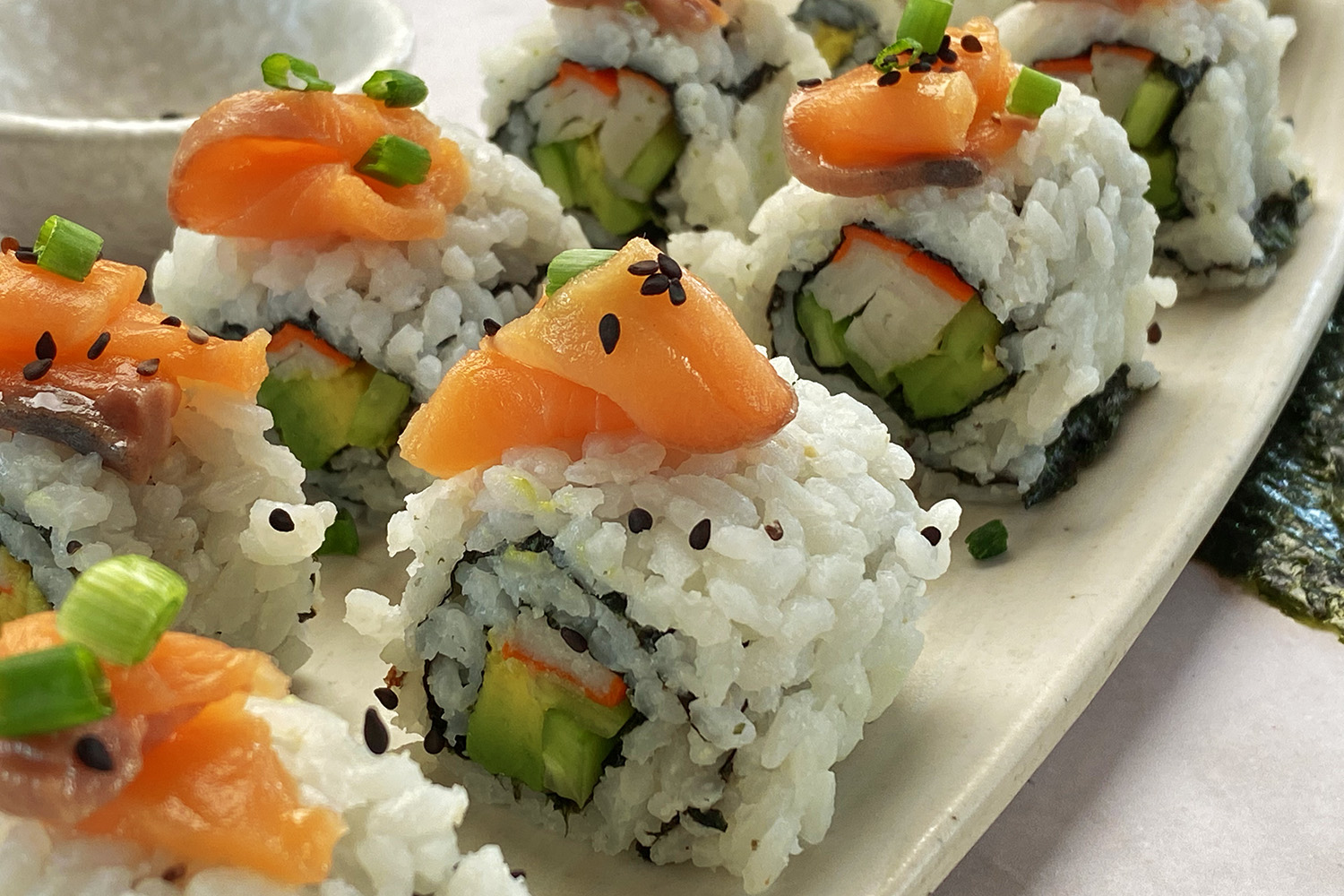
Whether you're an experienced sushi chef or a first-time roller, this step-by-step guide will help you create your own tasty sushi feast at home with confidence. Get ready to embark on a global culinary adventure that captures the essence of Alaska and Japan in one delightful morsel.
Table of Contents
Recipe Video
[adthrive-in-post-video-player video-id="xPa3WOts" upload-date="2023-10-05T10:39:55.000Z" name="Alaska Roll" description="Learn to make the perfect Alaska roll! Fresh salmon, creamy avocado, and zesty rice - sushi magic in the making." player-type="default" override-embed="default"]
Why This Recipe Works
This recipe for Alaska rolls works because of the way it seamlessly blends a combination of flavors and textures.
The creamy avocado provides a rich, buttery contrast to the refreshing crunch of cucumber, while the sweet and slightly tangy crab or salmon adds depth to each bite. Expertly seasoned sushi rice ensures the perfect sticky texture for rolling. The nori seaweed sheets serve as a delicate yet sturdy wrap, holding the ingredients together while offering a subtle umami flavor. The result is a harmonious blend of sweet, savory, and fresh notes, showcasing the essence of Japanese cuisine.
Ingredients
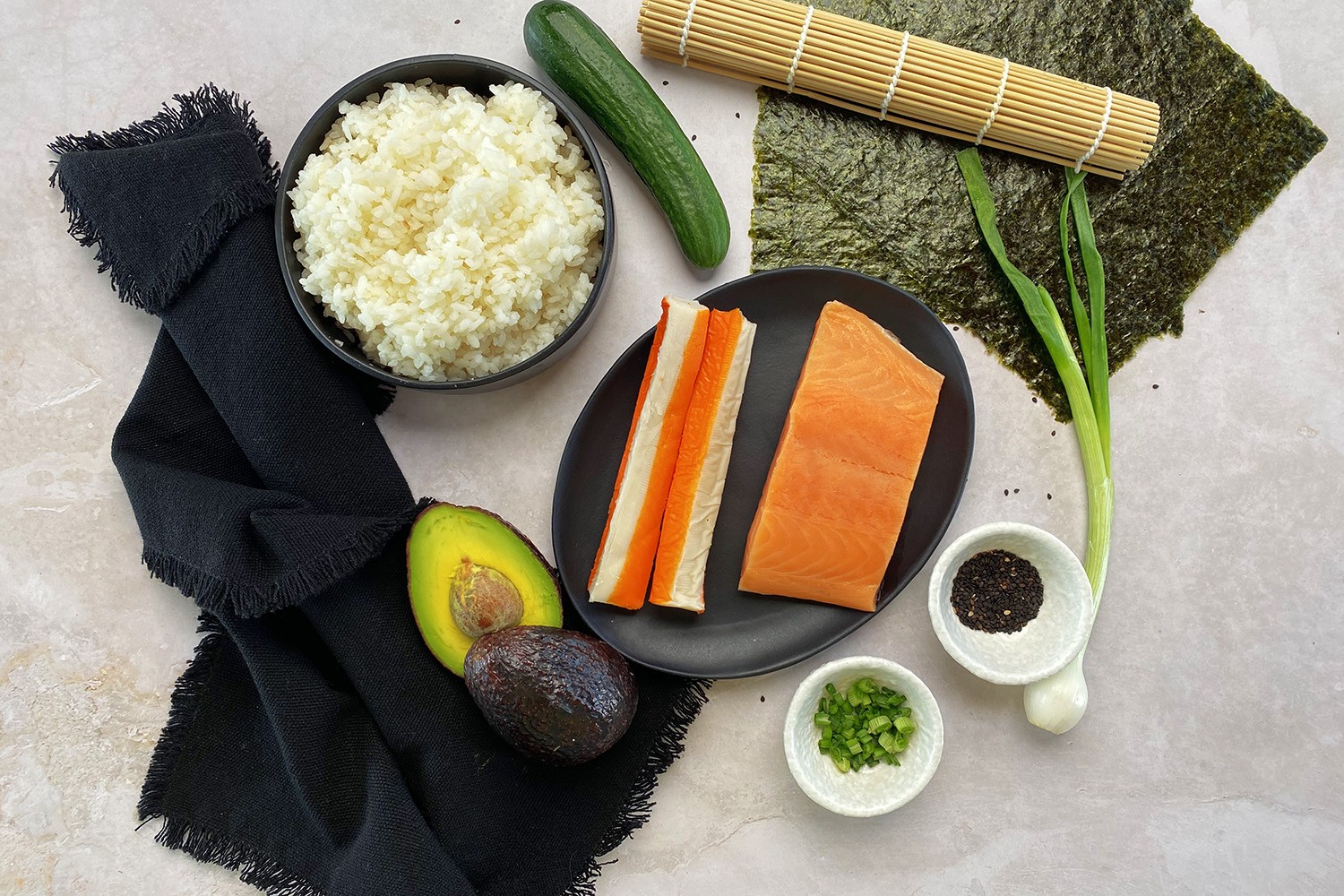
Nori:
Nori is a seaweed wrap that enhances the overall taste and texture of your rolls. It is most commonly used in sushi rolls. They can be found in the international foods section of your grocery store.
Sushi Rice:
Sushi rice is made with a specific type of short-grain or medium-grain rice that becomes sticky when cooked. Koshihikari, calrose, and Nishiki rice are all excellent options to use for sushi rice.
To prepare your sushi rice properly, rinse it thoroughly before cooking and season it with a mixture of rice vinegar, sugar, and salt. It should be sticky but not mushy.
You can also make it easily using this Instant Pot Sushi Rice recipe.
Surimi:
Surimi is imitation crab meat made of white fish such as pollock or hake. It is used quite frequently across Asian cuisine. Surimi is ready to go so you don't need to worry about finding sushi-grade surimi.
Avocado & Cucumber
While avocado and cucumber are typically used when making Alaska rolls, daikon, radish, carrot, and mango can all add their own unique characteristics to the mix.
Salmon
The term "sushi-grade" refers to fish that has been carefully handled, processed, and frozen to meet specific food safety standards, ensuring the safe consumption of raw fish. If you can't find sushi-grade salmon to use in this Alaska roll recipe, you can always top your rolls with smoked salmon.
How to Make Alaska Rolls
Step One:
Begin by coating your bamboo mat in plastic wrap and placing it on the table in front of you so that the bamboo runs lengthwise and you can roll the mat away from you. Lay your nori down on the mat and coat it in sushi rice, keeping your fingertips wet as you work with it.
Step Two:
Once the nori is coated in rice, flip the sheet over. With the nori side up, place your surimi, cucumber, and avocado at the top of the sheet, running lengthwise like the bamboo.
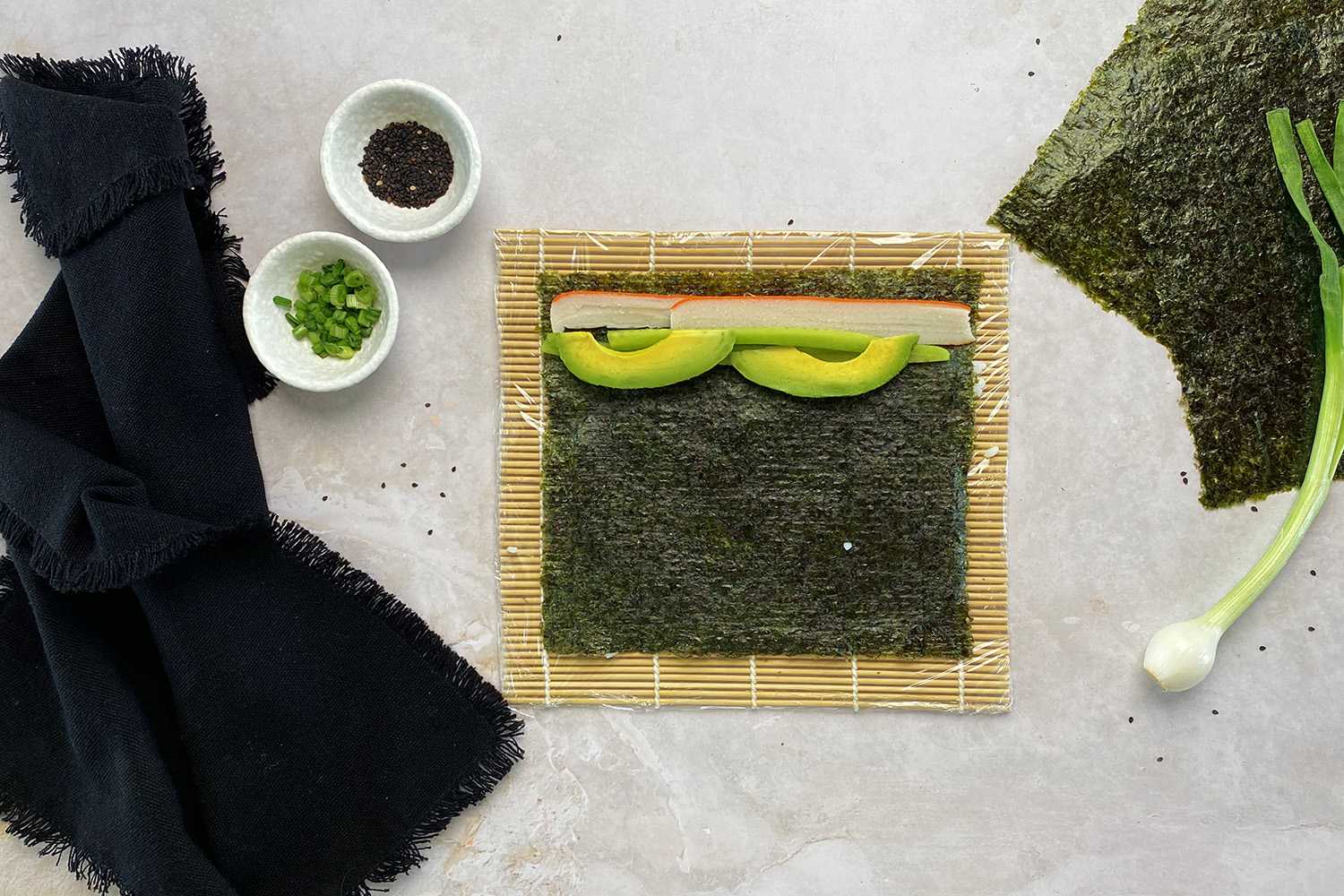
Step Three:
Beginning at the top, roll the mat towards you until the edge of the mat meets itself. Lightly squeeze your roll in place to make it as tight as possible without bursting open. Carefully peel back the end of the mat so you can continue rolling your sushi roll without rolling the mat into it.
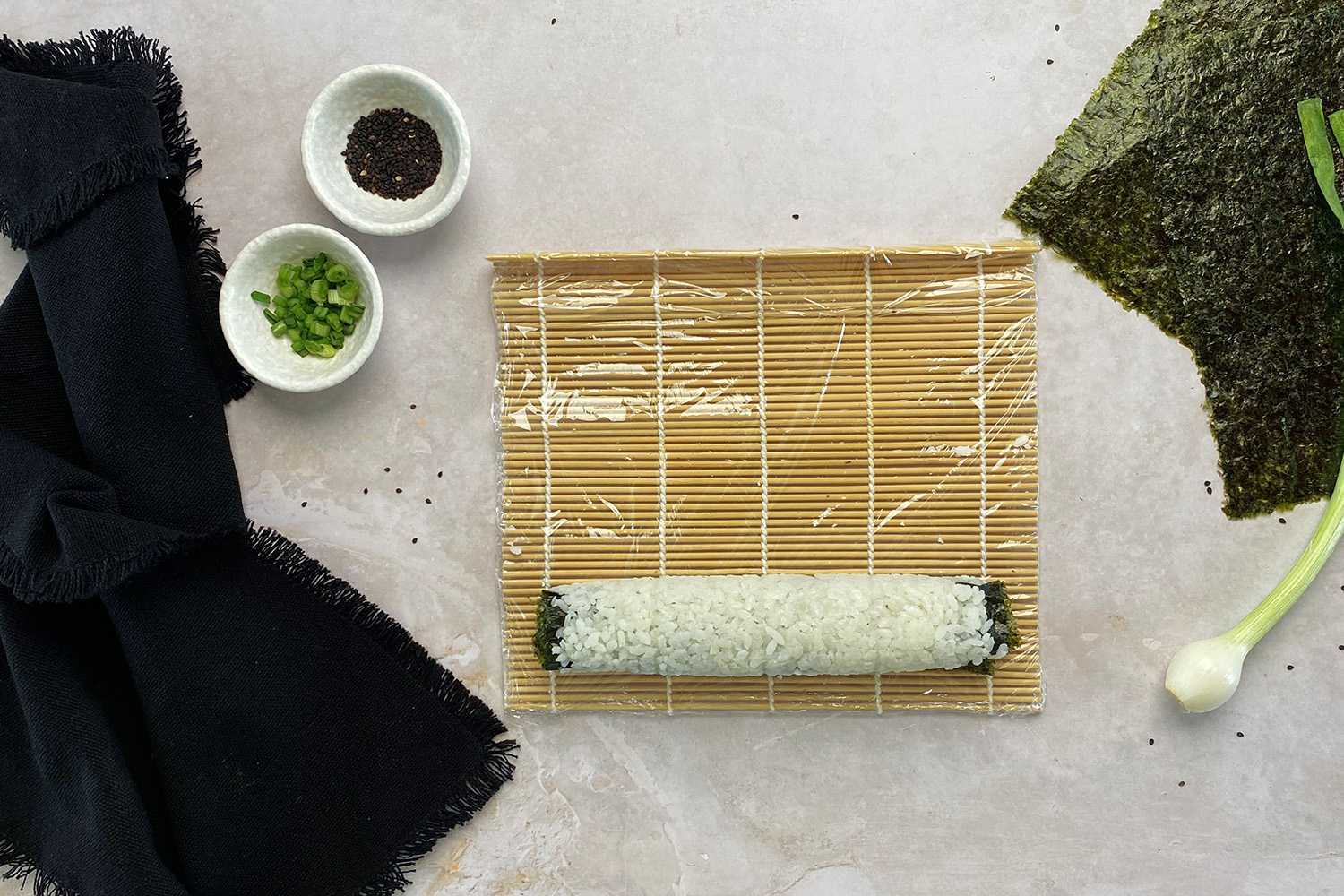
Step Four:
Transfer the sushi to the cutting board and cut your roll into pieces roughly 1 ½" - 2" thick using a very sharp knife. Run the blade under lukewarm water before cutting.
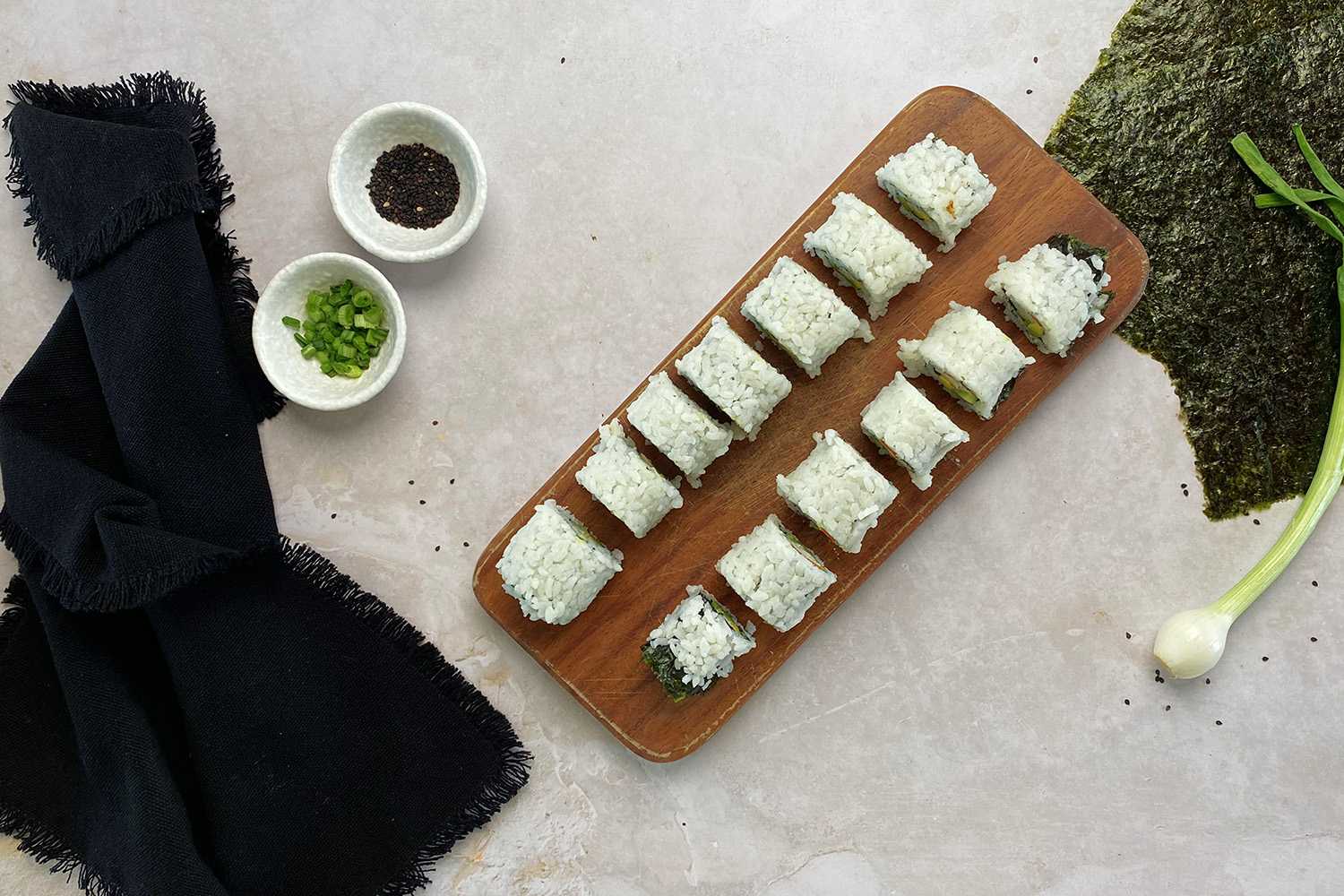
Step Five:
Top each piece with salmon, sesame seeds, and chives.
Step Six:
Serve with soy sauce, wasabi, pickled ginger, and enjoy!
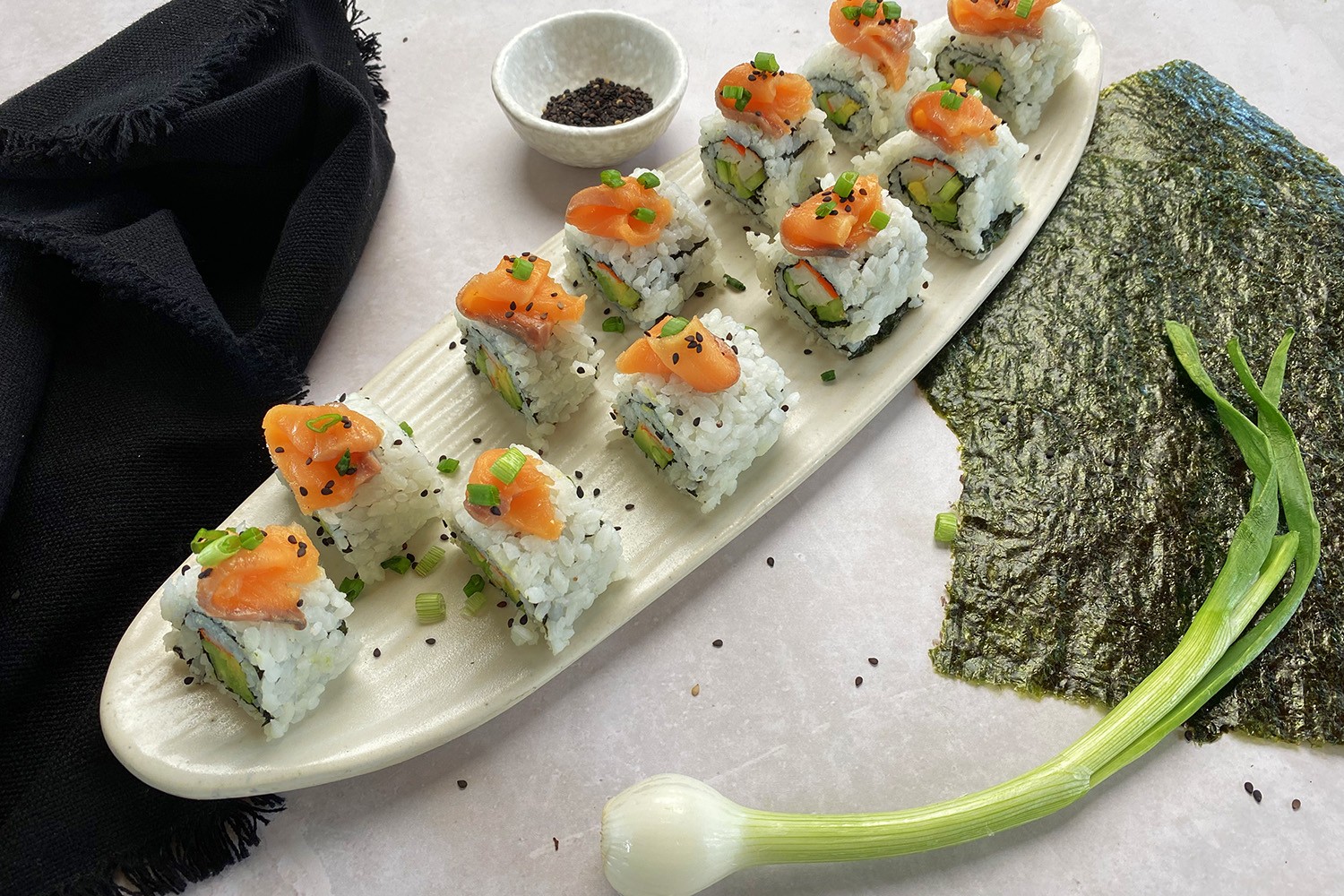
Tips
- The most important thing to remember when making sushi is that anything that touches the rice should be wet. Sushi rice is sticky, so it will stick to anything it feels, creating an even bigger and bigger mess anytime it gets touched. This is often the most significant challenge home chefs have with making sushi. Keeping your fingers wet as you work with the rice will allow you to maneuver it without it sticking to your hands.
- When slicing your sushi, use the sharpest, non-serrated knife you have, as a dull knife can crush the roll, ruining all your hard work. Wet the blade with some lukewarm water to stop the sushi rice from sticking to the knife, and confidently slice into the roll. Wipe the edge off, and rinse it with water between each slice to keep your cuts clean.
What to Serve With Alaska Rolls
To create a full sushi experience, consider serving your Alaska rolls with a selection of traditional Japanese accompaniments such as miso soup, pickled ginger, and soy sauce. A side of edamame adds a healthy and protein-rich element to the meal. Serve your Alaska rolls with a variety of other sushi rolls designed to please your pallet. Finish your sushi feast off with a fluffy Japanese cheesecake for dessert.
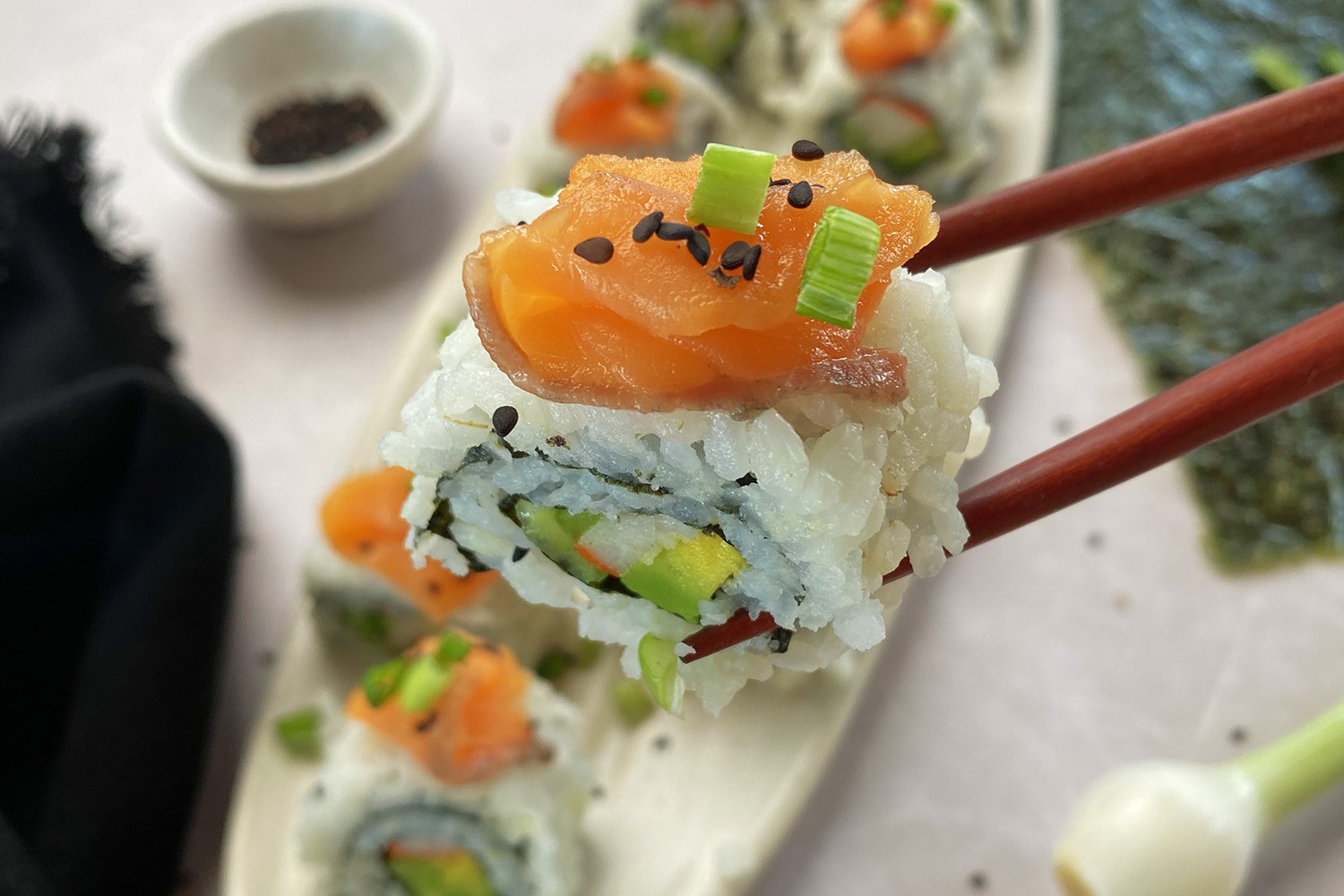
FAQs
Do I need special sushi knives to cut my Alaska rolls?
While special sushi knives, such as a Yanagi ba can be useful for cutting sushi rolls, they are not absolutely necessary.
Is this Alaska roll recipe gluten-free? Vegan?
With a few minor alterations, you can easily have gluten-free or vegan Alaska rolls. Traditionally, soy sauce contains wheat so it needs to be substituted with a gluten-friendly brand. Additionally, the rice vinegar that you season your sushi rice with will need to be a gluten-free variety. To make your rolls vegan, simply swap the surimi and salmon for vegan imitation crab and some marinated tofu.
How long can leftover Alaska rolls be kept fresh?
Sushi begins to deteriorate quickly so it's best to enjoy it fresh. However, leftover rolls can be wrapped tightly in plastic wrap and stored immediately in an airtight container. They will keep fresh in the fridge for 1-2 days max.
More Sushi Recipes
For more fun, rewarding, and creative culinary challenges that also taste delicious, check out this collection of sushi recipes to inspire you.
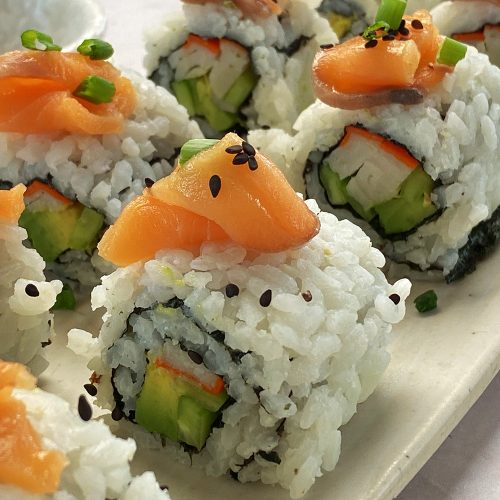
Alaska Roll
Ingredients
- 1 sheet nori
- 1 cup lukewarm water
- 1 cup sushi rice cooked
- 4 slices surimi
- 3-4 slices cucumber
- 2 slices avocado
- 6-8 slices smoked salmon
- 1-2 teaspoons sesame seeds to taste
- 1-2 teaspoons chives to taste
Instructions
- Begin by coating your bamboo mat in plastic wrap and placing it on the table in front of you so that the bamboo runs lengthwise and you can roll the mat away from you. Lay your nori down on the mat and coat it in sushi rice, keeping your fingertips wet as you work with it.
- Once the nori is coated in rice, flip the sheet over. With the nori side up, place your surimi, cucumber, and avocado at the top of the sheet, running lengthwise like the bamboo.
- Beginning at the top with your fillings, roll the mat towards you until the edge of the mat meets itself. Lightly squeeze your roll in place to make it as tight as possible without bursting open. Carefully peel back the end of the mat so you can continue rolling your sushi roll without rolling the mat into it.
- Cut your roll into pieces roughly 1 ½" - 2" wide using a very sharp knife. Run the blade under lukewarm water before cutting.
- Top each piece with smoked salmon, sesame seeds, and chives.
- Serve with soy sauce, wasabi, pickled ginger, and enjoy 🙂
Nutrition
Video
Notes
- The most important thing to remember when making sushi is that anything that touches the rice should be wet. Sushi rice is sticky, so it will stick to anything it feels, creating an even bigger and bigger mess anytime it gets touched. This is often the most significant challenge home chefs have with making sushi. Keeping your fingers wet as you work with the rice will allow you to maneuver it without it sticking to your hands.
- When slicing your sushi, use the sharpest, non-serrated knife you have, as a dull knife can crush the roll, ruining all your hard work. Wet the blade with some lukewarm water to stop the sushi rice from sticking to the knife, and confidently slice into the roll. Wipe the edge off, and rinse it with water between each slice to keep your cuts clean.